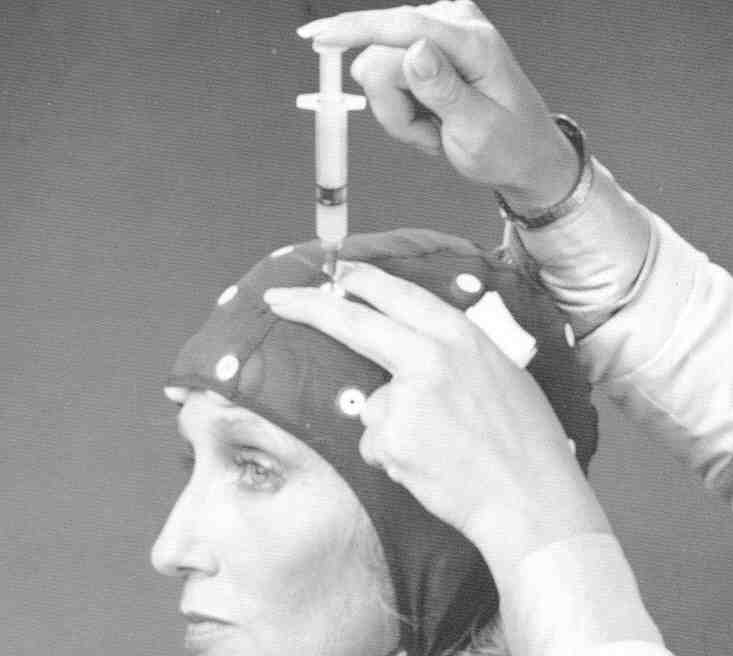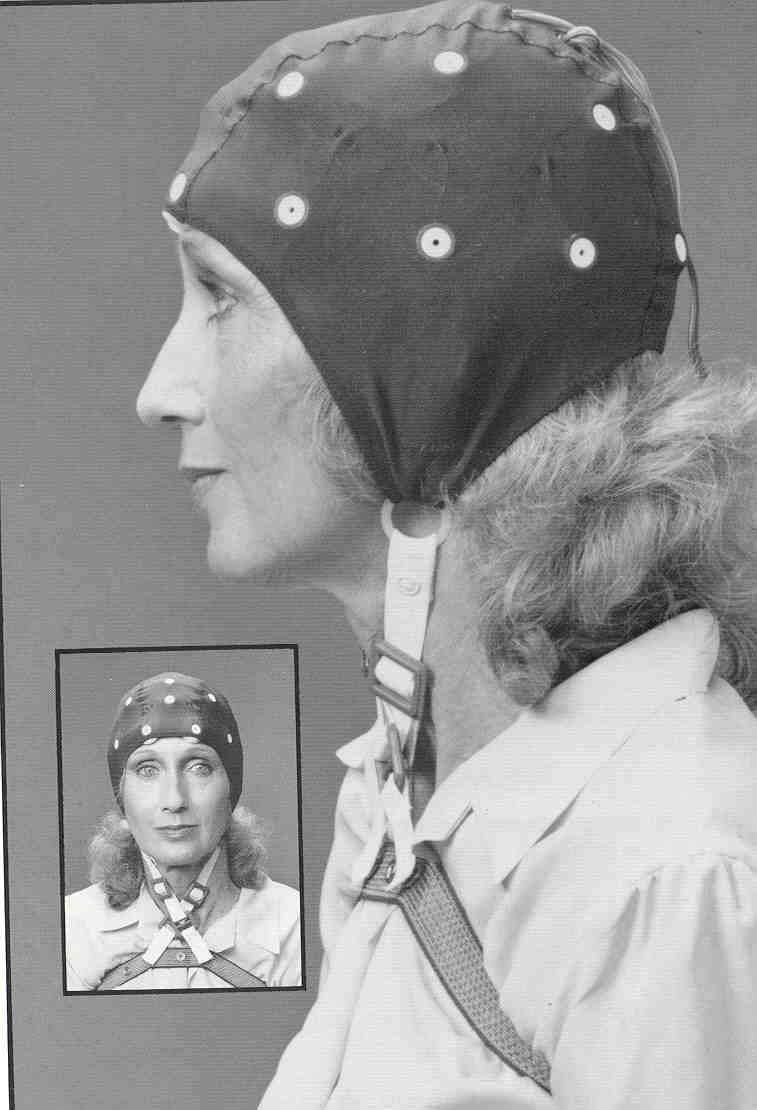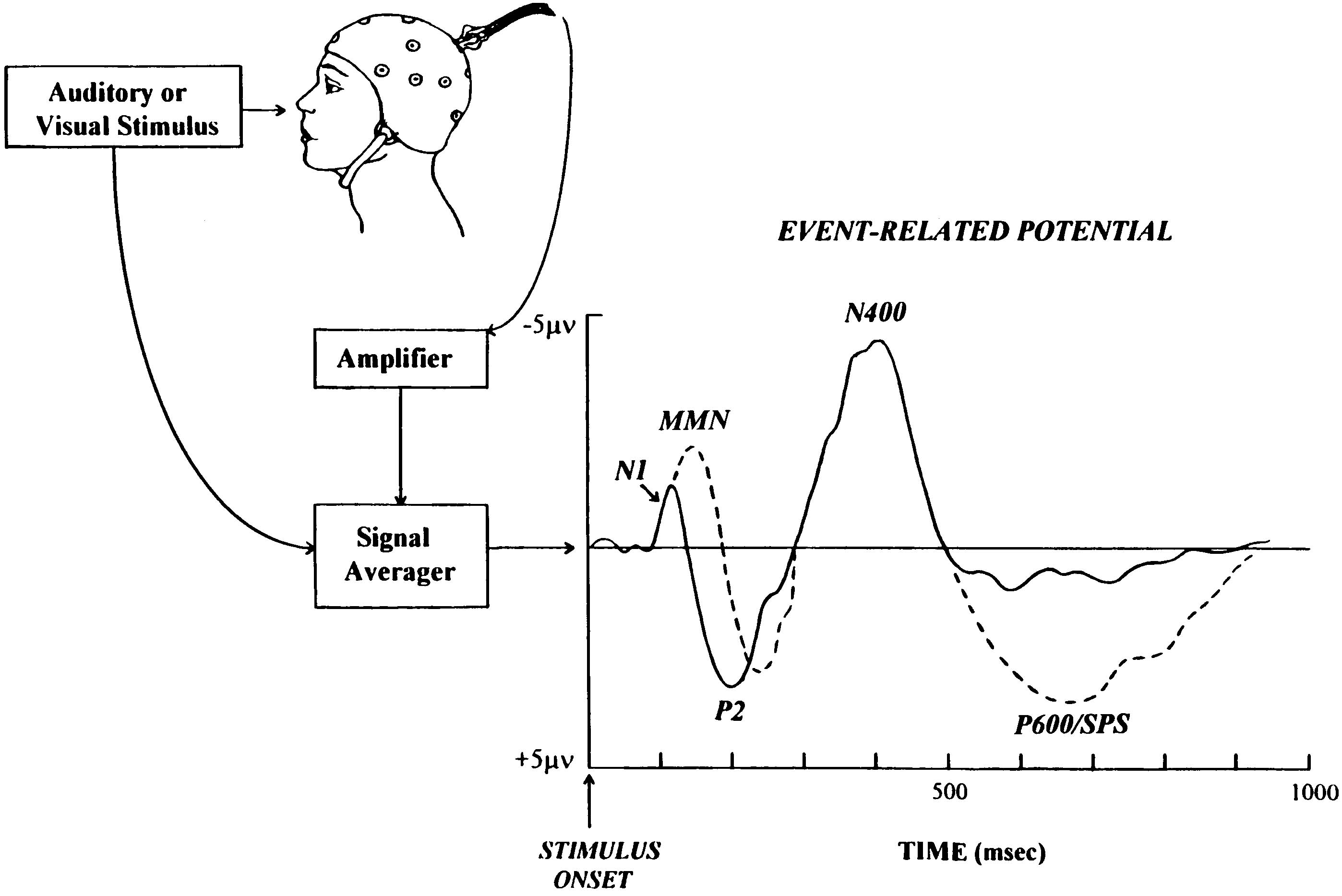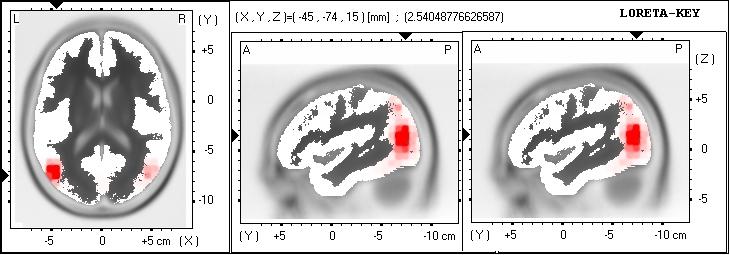____________________
Lee Osterhout's
Cognitive Neuroscience of Language Lab
What are ERPs?




Event-related brain potentials (ERPs) are positive and negative voltage fluctuations (or components) in the ongoing electroencephalogram (EEG) that are time-locked to the onset of a sensory, motor, or cognitive event. ERPs reflect brain activity that is specifically related to some stimulus or other event. This activity cannot be directly observed in the EEG, due to the fact that the EEG is a composite of simultaneously occurring brain activity and doesn't reflect just the activity associated with the event of interest. In other words, the "signal" (the brain response to some event) is swamped by the "noise" (the brain activity that is unrelated to that event). The solution to this problem is to present not just one instance of the event of interest, but many instances. Epochs of brain activity, each one time-locked to the onset of an event, are then averaged together. The "random" activity washes out during averaging, whereas the brain activity of interest -- namely, what is constant over presentations of the event of interest -- stays in the signal. Through this signal-averaging procedure, it is possible to isolate the brain response that is specifically elicited in response to some event of interest. ERP components are usually named in terms of their polarity and peak latency (in milliseconds).

Ideally, one would like to identify the precise neural sources that generate the ERPs (this is known as the "inverse solution"). Unfortunately, the inverse solution is impossible to compute with certainty, because any given scalp distribution could, in principle, be generated by any number of source configurations within the brain. However, researchers have developed powerful tools that provide good estimates of these neural sources, given some reasonable assumptions. One such method is known as "LORETA," which provides an estimate of the current distribution throughout the entire 3-dimensional space within the brain. An example of a LORETA solution, mapped onto a normalized brain space, is provided below.
